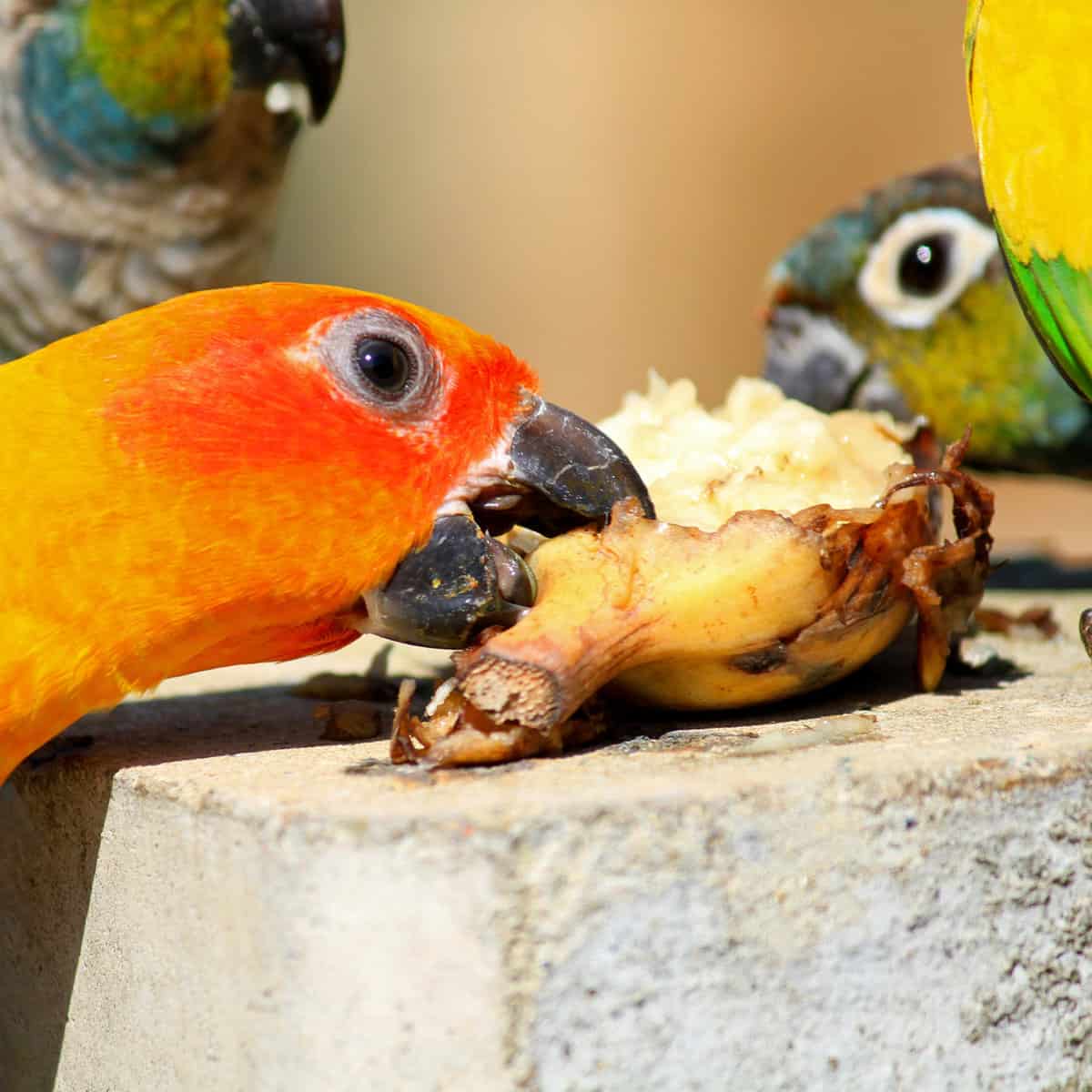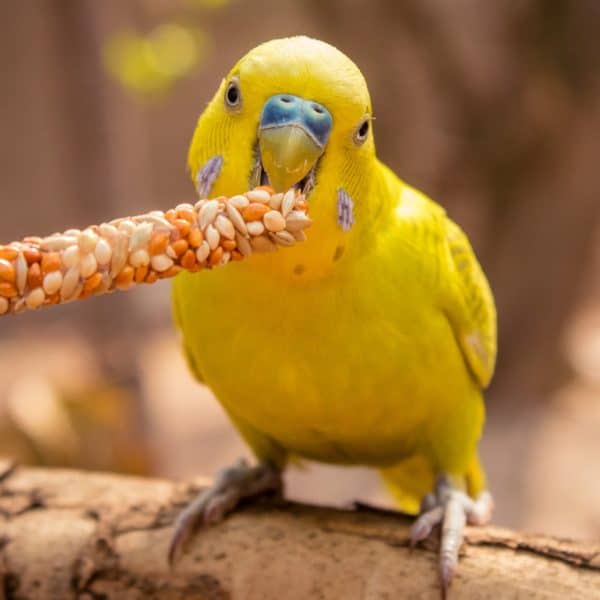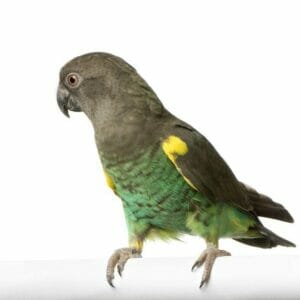Last Updated on by Mitch Rezman
I wrote this blog post in an attempt to illustrate the complexity of feeding pet birds.
Anyone who has been reading me for a while knows I am the king of fact-checking, especially in the pet bird niche.
I thought it would be fun to read up on what thoughts and ideas other “expert sites” are expressing.
How helpful, accurate, and relevant is their information?
I am an expert on the nutritional needs of these eloquent creatures while knowing it is important to stay up-to-date on trends in this very extreme market.
Feathered factoid: Dogs and or cats occupy around 50% of American homes. Pet birds on the other hand are in less than 4% of American homes from the most recent data I could find.
Thus one can find far more content on mammalian pets than on feathered ones.
So I googled “how to feed a pet bird” or something like that and here are some results with my annotations attached for clarity
The RSPCA website’s home page states, “Welcome to the RSPCA Knowledgebase – Australia’s most trusted source of animal welfare science, advice, and information.
The post has 2 messages it wants you to believe – seed bad – pellets good.
The irony here is rich indeed,
Adding context to this video, for a hundred million years budgies and species like “grass parakeets” have lived on nothing but grass seed their entire lives.
Pellets are assumed in the post all to be the same – manufactured food not accounting for differences in kilo/calorie output, rice-based vs soy-based, sugar-laden, proportionally sized – you get the idea, every pellet is different for the nutrition it provides.
There is no one pellet that fits all pet bird nutritional needs.
Hagen Tropican pellets provide nutrition and calories based on bird size/species.
Most commercial bird pellets are the same pellets in 5 different sizes.
Harrison’s High Potency pellets have higher fat which helps to get the birds interested in eating them and once acclimated to them, you switch to the lower-fat variety.
Harrisons High Potency is meant to be used for only 6 months, then the bird should be switched to the Adult Lifetime. But few teach this subtlety about Harrison’s bird food pellets.
At the very end, they talk about lorikeets, one species out of about 700 species of pet birds we keep in our home – not helpful.
Although lorikeets are well-known fruit eaters, they can morph into carnivores at a moment’s notice.

Take the coconut which can be classified as a fruit or nut but also a “seed.”
Coconuts are one of the healthiest foods a mammal or bird can eat so stop with the “seeds are a bad thing.”
Here’s a national corporation that should have the best expertise available for their customers but I found many weaknesses in their message for feeding your FID.
Let’s move on to our next “expert pet bird site.
Look at this list of “whitelisted” fruit: Papayas – Bananas – Melons – Mangos – Oranges – Kiwis And Apples.
If you took anything away from our post (above), it is that food enters a bird’s crop and sits there for up to six hours.
Six hours of a high PH (acidic) food like oranges, pineapple and tomatoes can irritate the crop which can trigger chest plucking as the bird cannot identify the source of pain.
A statement from the post “Since birds like to pick at their meal throughout the day, make sure your bird’s bowl is always about one-half full of fresh food.”
Keeping food dishes 1/2 full results in two outcomes. The bird gets less choosy due to the small amount of food available thus preventing the outcome of two, removing unwanted and unnecessary from the dish and depositing it on the bottom of the birdcage or your Pergo floor.
Picking on them is so much fun and way too easy.
They offer a chart for percentages of seed vs pellets vs whatever they are offering.
One of the categories is “Conure.”
Let me get this straight.
A green cheek conure weighs about 64 grams, about half the weight of a fat cockatiel.
Conversely, Patagonian Conures aka Burrowing Parrot Species, are the largest type of conure and are fully grown can measure around 18 inches, and weigh 240-310 grams, about the size of a Timneh African Grey.
Thus to offer a “one size fits all conure category” is simply irresponsible.
What to Feed Your Bird – Selecting the Right Bird Food | Petfinder
If your bird’s seed mix is not enriched, you can add powdered vitamins.
But despite what you hear in pet stores and read on vitamin labels, do not add the supplements to your bird’s drinking water.
This can alter the taste and color of the water, thus discouraging him from drinking.
Instead, sprinkle a small amount of powdered vitamins on the seeds.
Add supplements only if your bird’s food is not vitamin- and mineral-fortified.
Let me jump in here because there is so much to unpack.
Here is what is wrong with those pieces of advice
When you sprinkle powdered supplements on bird seeds, the hulls get covered with the powdered supplements which are discarded thus the birds get zero supplements.
We have been putting Lafebers Vitamins in our bird’s water for years.
If you are unsure that your bird will drink supplemented water, simply observe your bird for a day or two to determine if he or she is drinking.
Chlorine added to municipal drinking water supplies does not seem to be a problem for birds, but bottled or distilled water may have certain advantages.
The post mentions chlorine but not lead which is prevalent in municipalities across the US.
We have our water tested regularly by Indiana Water who replaced all the water mains in Lowell last summer.
In addition, we have a filter on the cold side of our kitchen sink faucet where we draw all our drinking water for our birds and us humans.
“For every seed they take, they have probably eaten 10 or more bugs, moths, spiders, or caterpillars”
I say the opposite is true, they are ground feeders focusing more on seeds fruits, and berries.
Although commercial petfood is available with insect protein I’ve not seen it as an ingredient in pet bird food in over 2 decades of selling the product.
The article rhetorically asks, so why do we fill our bird cages to the brim with seed bird food for our pet birds?
Those who “fill our bird cages to the brim” don’t read our blog or haven’t had a pet bird for too long.
Why is this a thing?
On a good day, a bird that has an overabundance of food in a dish will be a picky eater.
Just look at your floor, if it’s covered with seeds, that’s an indication that your bird is being picky and tossing what it doesn’t think it won’t like, to the floor.
This leads to my common refrain “If you don’t like to vacuum, don’t get a bird.”
Wrapping things up I’ll admit I don’t know everything about pet birds but the feedback we’ve gotten from millions of website visitors and have 9 birds of our own so we are “where the rubber meets the road” when it comes to pet birds.
Written by Mitch Rezman
Approved by Catherine Tobsing
Follow up 3/31/2024
thanks, another excellent article. wife and i have female african grey for 15 years and male goffin cockatoo for 7 years. the eating habits are very different and depend upon them and vary day to day.
we have to share our table food each meal or won’t hear the end of it!
as you said if they don’t like something it ends up on the floor.
yesterday they did not want the cookie i offered…today they gobbled it up… offered by my wife!
male is daily throwing things out of the food dish while the female only does it to make a point! and i could ramble on and on…..thanks for watching out for the birds…Lee and Vickie.
Author Profile
Latest entries
 The Traveling BirdJune 26, 2025Can You Name 5 Parrot Species That Are Living Wild in the USA?
The Traveling BirdJune 26, 2025Can You Name 5 Parrot Species That Are Living Wild in the USA? Bird BehaviorJune 26, 2025How is it Parrots Are Problem Solvers Social Animals and Even Use Tools?
Bird BehaviorJune 26, 2025How is it Parrots Are Problem Solvers Social Animals and Even Use Tools? Bird & Parrot AnatomyJune 25, 2025How a Tiny Chemical Modification Makes Parrots Nature’s Living Paintings
Bird & Parrot AnatomyJune 25, 2025How a Tiny Chemical Modification Makes Parrots Nature’s Living Paintings PigeonsJune 20, 2025How Do Parrots Thrive in Cities Outside Their Native Habitats?
PigeonsJune 20, 2025How Do Parrots Thrive in Cities Outside Their Native Habitats?




